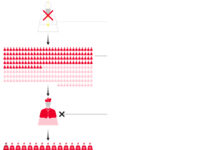In & Out, the studio comedy that was a decent-sized hit in the fall of 1997, has something of a famous origin story.
In 1994, Tom Hanks won the Academy Award for playing a gay lawyer with AIDS in Philadelphia, the first major Hollywood movie to deal with the AIDS epidemic. In his acceptance speech, Hanks acknowledged his high school acting teacher and a classmate, who he described as “two of the finest gay Americans, two wonderful men that I had the good fortune to be associated with, to fall under their inspiration at such a young age.”
The producer Scott Rudin, himself a gay man, had an idea: What if an actor did something like that, except that the gay teacher wasn’t actually out? And what if the teacher himself hadn’t come to terms with his being gay?
That forms the basis for In & Out, in which Kevin Kline is Howard, the drama teacher in small-town Indiana, who is so closeted that he’s actually engaged to be married to a woman (Joan Cusack).
The Plot
In the film, written by Paul Rudnick and directed by Frank Oz, the plot is set in motion when Cameron Drake (Matt Dillon), a former student of Howard, wins an Oscar for his part in an earnest gays-in-the-military drama and decides to thank Howard before declaring “and he’s gay.”
[embedded content][embedded content]
(In Hanks’ case, both of his contemporaries were long out, and he implied in the speech that he had spoken to them beforehand to let them know he’d be mentioning them.)
Now, the trailer for the movie showed that moment and implied very heavily that Howard had been mistakenly outed as gay. The idea was that Howard was “wrongfully accused,” and left in the predicament of everyone in his town falsely believing that he’s homosexual, including his fiancé, his students, and his parents (the wonderfully mismatched couple of Wilford Brimley and Debbie Reynolds). It was made to look like the “not that there’s anything wrong with that” episode of Seinfeld, which had aired about five years earlier.
But in the movie — at the alter, of course — Howard eventually comes to terms with his sexuality, even sharing a kiss with a visiting TV reporter (Tom Selleck, amid his 1990s comeback when he was on Friends).
Here he is rebelling against traditional “manly” notions:
[embedded content][embedded content]
A Film of Its Time
While the film is well-intentioned, it’s very much of its time. As Jaya Saxena wrote in GQ in 2018, the film is “problematic, sexless, and a generally unrealistic depiction of gayness,” while “Kevin Kline and Tom Selleck’s kiss looks like it was done under the Hays Code.” The Birdcage, a similar story about homosexuality crashing into conservative morality, came out the year before and was both much funnier and more daring.
Also, the film never gets around to explaining how, exactly, Cameron Drake knew Howard was gay before Howard himself did, despite having been an implicitly dimwitted high school student when they knew each other.
Of course, the film ends with a homage to Spartacus, another film with significant gay undertones:
[embedded content][embedded content]
While it’s often believed that movies these days have become sexless, films are able to get away with much more when it comes to gay content now than they could two decades ago. Two films this year, in fact — Hulu’s Fire Island and the forthcoming theatrical release Bros — have been honest and frank about gay life, including sexually explicit content and casts that are nearly entirely LGBTQ performers.
It’s not that In & Out wasn’t funny (and its heart was certainly in the right place), but it’s very much a film of its time, which could get away with what it could in 1997.
[embedded content][embedded content]









